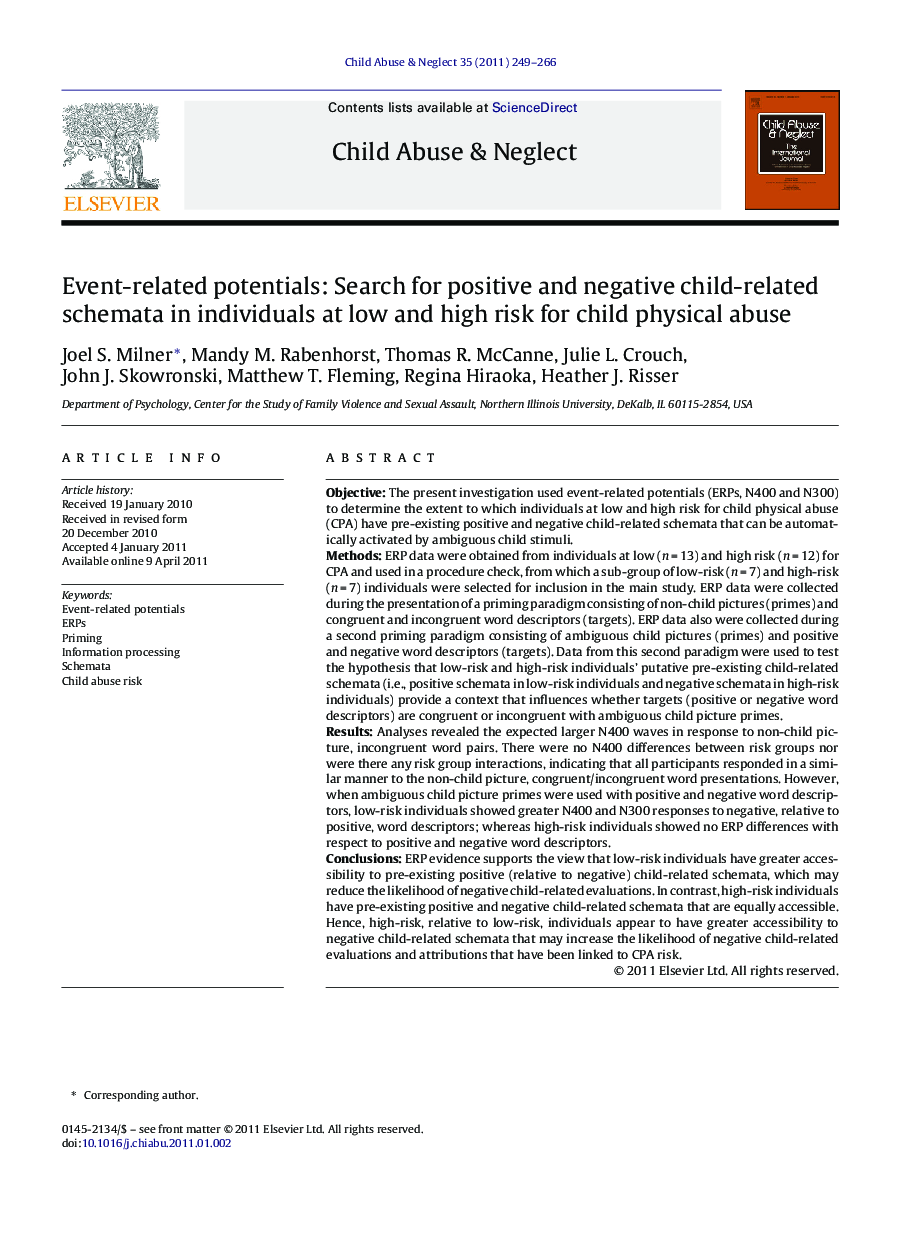| Article ID | Journal | Published Year | Pages | File Type |
|---|---|---|---|---|
| 345377 | Child Abuse & Neglect | 2011 | 18 Pages |
ObjectiveThe present investigation used event-related potentials (ERPs, N400 and N300) to determine the extent to which individuals at low and high risk for child physical abuse (CPA) have pre-existing positive and negative child-related schemata that can be automatically activated by ambiguous child stimuli.MethodsERP data were obtained from individuals at low (n = 13) and high risk (n = 12) for CPA and used in a procedure check, from which a sub-group of low-risk (n = 7) and high-risk (n = 7) individuals were selected for inclusion in the main study. ERP data were collected during the presentation of a priming paradigm consisting of non-child pictures (primes) and congruent and incongruent word descriptors (targets). ERP data also were collected during a second priming paradigm consisting of ambiguous child pictures (primes) and positive and negative word descriptors (targets). Data from this second paradigm were used to test the hypothesis that low-risk and high-risk individuals’ putative pre-existing child-related schemata (i.e., positive schemata in low-risk individuals and negative schemata in high-risk individuals) provide a context that influences whether targets (positive or negative word descriptors) are congruent or incongruent with ambiguous child picture primes.ResultsAnalyses revealed the expected larger N400 waves in response to non-child picture, incongruent word pairs. There were no N400 differences between risk groups nor were there any risk group interactions, indicating that all participants responded in a similar manner to the non-child picture, congruent/incongruent word presentations. However, when ambiguous child picture primes were used with positive and negative word descriptors, low-risk individuals showed greater N400 and N300 responses to negative, relative to positive, word descriptors; whereas high-risk individuals showed no ERP differences with respect to positive and negative word descriptors.ConclusionsERP evidence supports the view that low-risk individuals have greater accessibility to pre-existing positive (relative to negative) child-related schemata, which may reduce the likelihood of negative child-related evaluations. In contrast, high-risk individuals have pre-existing positive and negative child-related schemata that are equally accessible. Hence, high-risk, relative to low-risk, individuals appear to have greater accessibility to negative child-related schemata that may increase the likelihood of negative child-related evaluations and attributions that have been linked to CPA risk.
